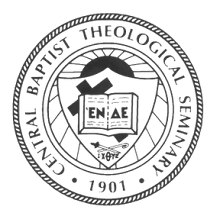In this tender and joyous season following
Easter, biblical texts about the appearances of the Risen Christ and mighty
works done in his name predominate.
Images of the good shepherd, the self-giving one who lays down his life,
and the one who knows his own mark the lectionary readings for this coming
Sunday, the Fourth Sunday of Easter.
Locating our lives
within the liturgical rhythms of the Christian year can nourish a more vibrant
faith. The first cycle of the year
celebrates key seasons: Advent, Christmas, Epiphany, Lent, Easter, which
includes The Great Fifty Days and the Ascension, and Pentecost. The remaining
cycle called the Season After Pentecost, or Ordinary time, seeks to live out
the implications of the Triune God’s great redemptive work.
It is the
Lent-Easter cycle that holds prominence, as resurrection gives meaning to the
rest of the liturgical seasons. It is
only because Jesus overcame death that his story is remembered and that
salvation is proclaimed in his name.
 |
| The Risen Christ by He Qi |
The Gospels differ
in their understandings of resurrection appearances. Luke, for example, has a definitive time when
the resurrection appearances cease; it is when Jesus ascends. The Fourth Gospel has a different
perspective. It is does not lay out the
historicized vision of Luke-Acts—forty days of appearances and then an
interlude before Pentecost—but a sense that the resurrection appearances do not
cease.
I spent the weekend
with a group of treasured colleagues, the WiTS, women who lead theological institutions. We gather a couple of times a year for
professional development and mutual encouragement and support. In addition to confidential conversations
about our particular places of ministry, we worship and pray together.
On Sunday morning
we celebrated the Eucharist, and I had the profound perception of the Risen
Christ in our midst. Of course, he draws
near in the breaking of bread, but sometimes I am too distracted to be
cognizant of his presence. Gathered with
these beloved sisters, I sensed the form Christ’s body takes in our day. The resurrection of Jesus is never solely his
story; we participate in it through our baptism and ongoing practices of
resurrection.
Each of my
colleagues is leading an institution that has its own unique challenges, mine
included. In recent years, economic
challenges have rendered all of us more fragile, and the shifting landscape of
the church interrogates the patterns of theological education. As women of faith, we find hope in the story
of resurrection for our schools. New
forms come out of dying to the old, and the promise of life abundant sustains
our work.
Hildegarde of
Bingen describes the Holy Spirit as “the power of greening.” Because of the supply of the Spirit, we trust
our schools will flourish as signs of resurrection power.
Molly T. Marshall
Central prepares women and men for seeking God, shaping church, and
serving humanity.


No comments:
Post a Comment